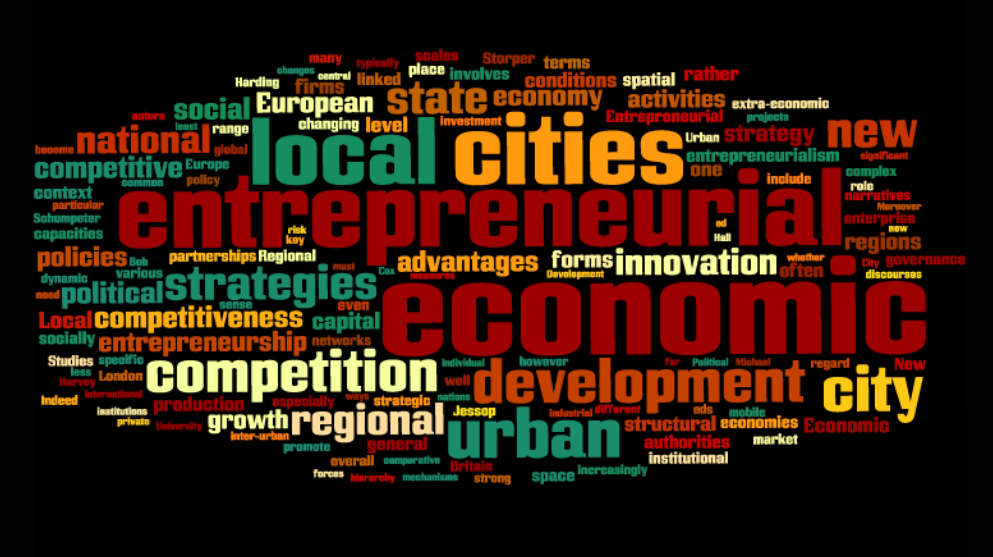With more than half of the world’s population living in cities, major metro regions are at the centre of economic growth, technological advancements and culture production. As globalization and the turn to neoliberalism intensify, cities have become increasingly entrepreneurial and competitive so as to ensure their place within the global economy; thus creating local implications.
The Rise of the Entrepreneurial City
In the era of Reagan and Thatcher, the economic regime within the Global North transitioned from Keynesian to Neoliberalism; countries moved away from the welfare state characterized by government intervention, and shifted towards privatization, deregulation and the opening up of national economies to foreign firms. As the nation state was hollowed out, cities looked to investors to cover budgetary short falls. As a result, many subsequently became more vulnerable to capital market gatekeepers such as bond rating agencies.
Bond rating agencies evaluate the creditworthiness of municipalities, nations or other institutions that are trying to issue long-term debt. The agency provides global investors with an analysis of the risk by determining the likelihood of the debt issuer not to make interest payments on the debt. The ratings handed out by each of the big three agencies, Standard and Poor’s (S&P), Moody’s, and Fitch Ratings, have widespread implications for a city’s ability to attract investors. Overall, such credit ratings are based on factors such as economy strength, level of reserves, and debt levels.
The importance of maintaining a high credit rating is expressed by many Canadian cities. A City of Toronto budget document states, “The City of Toronto is recognized as an important participant in global financial markets. The maintenance of a high quality credit rating is essential to ensure that the City’s ability to access the most cost-effective world capital markets will continue as it needs to borrow funds for capital purposes.”
Interurban Competition and Civic Boosterism
An OECD report states, “successful cities attract talented young highly-skilled workers, are centres of innovation and entrepreneurship and are competitive locations for global and regional headquarters.” One of the ways through which metro-regions are able to attract such talent and enterprise is through city marketing. Marketing helps cities develop their image and brand. It advertises to the international world that they are pro-business, have an ideal work force, or area cultural epicentre amongst many other qualities. For example, cities can market themselves by hosting mega events such as the Olympics. Scholar Gordon MacLeod states that, “one particular notable feature [of a business-led agenda] has been the commitment to highly speculative ‘flagship’ projects often enacted to enhance the imageability of the city.” Overall, mega-events act as a way of attracting international tourism, enhancing a city’s international image and status, and encouraging investment.
In the end, although an entrepreneurial form of management can help foster the economic growth of the city region, we need to be aware of the implications of operating within a business-like environment.
This is exemplified by the City of Toronto. In 2009, the city, along with other municipalities stretching from St. Catharine’s to Oshawa to Barrie, won the bid to host the Pan American Games. The Games are the world’s third largest international multi-sport games. As stated by a Government of Ontario webpage, “the Games mean opportunity—for our hard working athletes, our kids and families, for healthy communities, for visitors and for potential new investors who will see Ontario at its best.” Overall, the region will host more than 10,000 athletes, coaches and delegates from 41 countries, and up to 250,000 tourists. As such, Toronto’s former Mayor, David Miller, said, “an event of this calibre is an excellent opportunity to showcase Toronto and its passion for sport to the world.”
Local Implications
In the end, although an entrepreneurial form of management can help foster the economic growth of the city region, we need to be aware of the implications of operating within a business-like environment. The city’s investment in attracting and retaining “mobile factors of production, namely labour and capital,” can result in the retrenchment of social services, public spending, and an increase of gentrification and surveillance. All of the aforementioned can foster social polarization and exclusion, creating a divide between people based on economic differences. Therefore, one needs to balance the need to remain competitive within the global economy while ensuring sensitivity to the socio-economic conditions of the urban sphere.





